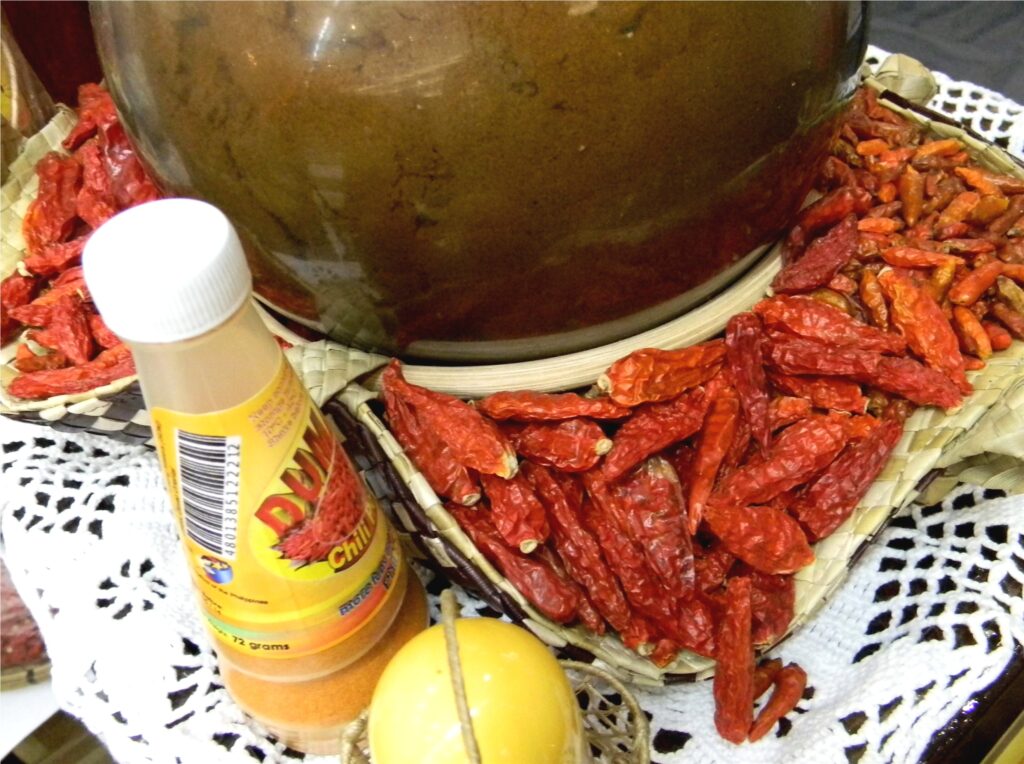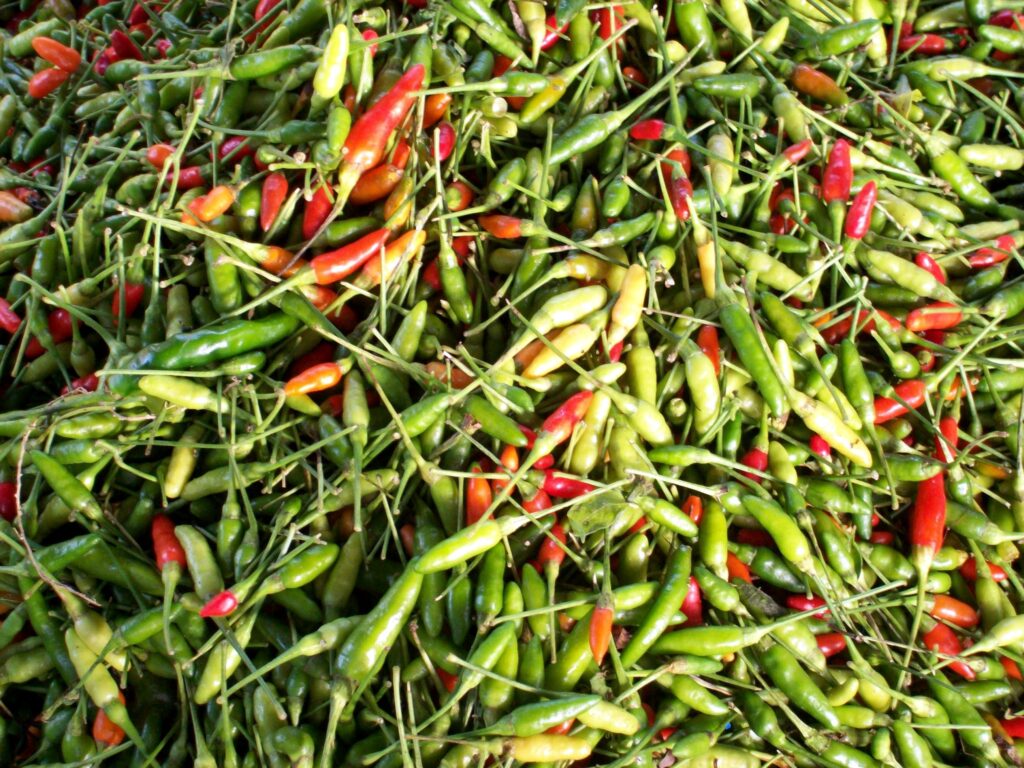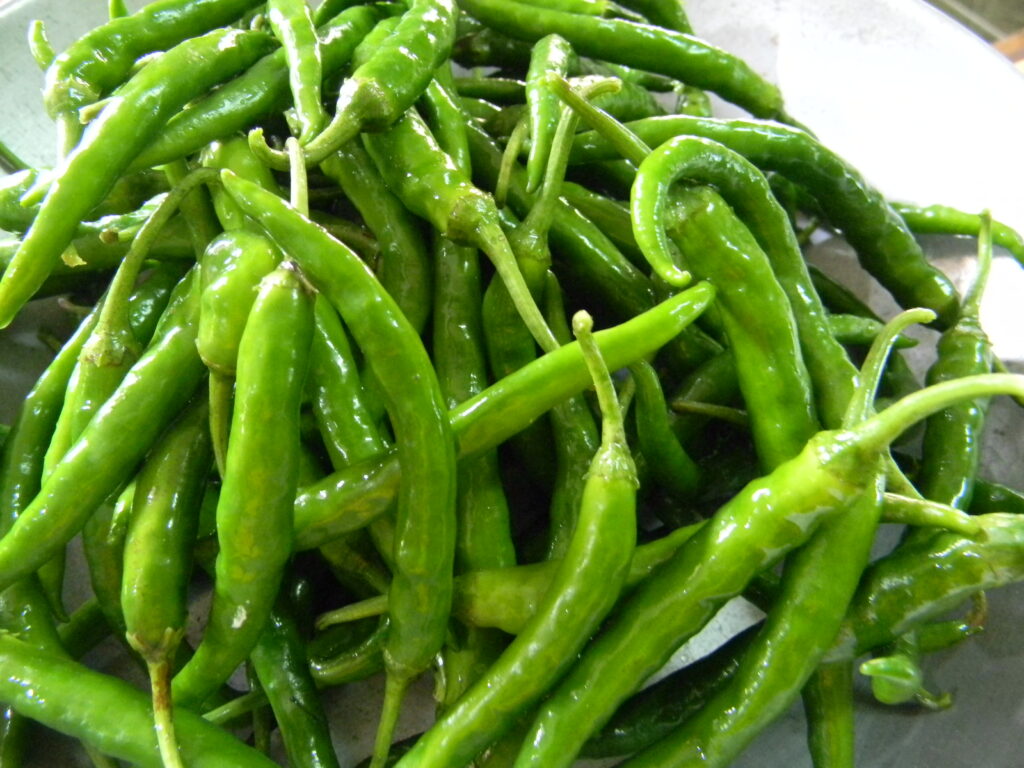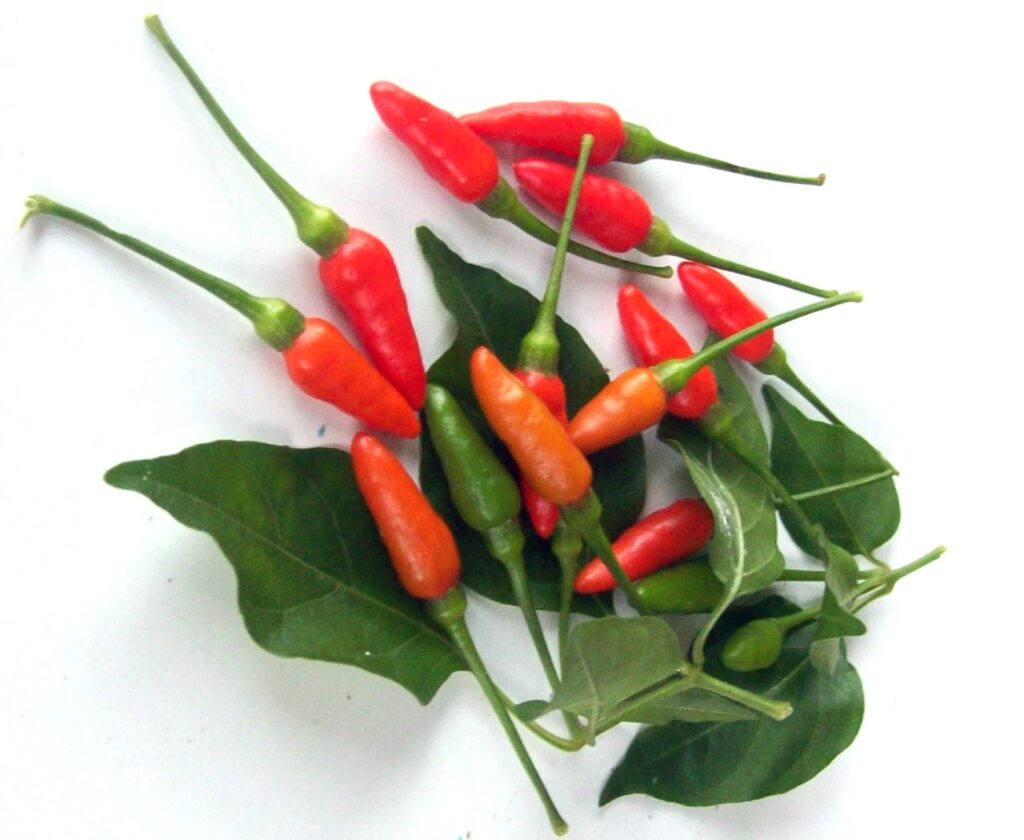Text and Photos by Henrylito D. Tacio
Chili or hot peppers – or “siling labuyo” – get their kick from a phytonutrient called capsaicin located in the pepper pod’s inside wall. Capsaicin is reportedly about 100 times hotter than the active principle piperine found in black pepper.
“Capsaicin attaches to the receptors on the taste buds that detect temperature and send signals of spicy heat to the brain,” explains pepper nutritionist Wendy Bazilian, the author of Eat Clean, Stay Lean.
According to Rico R. Magda, in an article published in Agriculture, “the compound capsaicin is almost insoluble in water and needs to be emulsified if used in food. Capsaicin extracted by organic solvent becomes gummy or oily syrup when concentrated.”
The “hotness” of chili peppers is determined by the level of capsaicin it contains. “To figure out how spicy a certain type of hot pepper is, adventurous eaters can refer to the Scoville scale, which ranks varieties from most to least spicy based on their capsaicin concentration,” wrote Anthea Levi in an article.

A sweet or bell pepper has no capsaicin and, therefore, no detectable heat even when undiluted, resulting in a Scoville Heat Unit (SHU) rating of zero. The country’s “siling labuyo,” although small, measures around 80,000-100,000 Scoville units, just at the lower end of the range for the hotter habanero chili.
Pure capsaicin is a skin-blistering (literally) 15 million Scoville units.
American stars like Kelly Clarkson and Shaquille O’Neal have been seen swallowing spicy stuff to raise awareness and funds for the neurodegenerative disease called amyotrophic lateral sclerosis.
The big question is: Why would people willingly submit themselves to that kind of pain? Other mammals don’t.
“Botanists believe plants use capsaicin as a defense to keep rabbits and other small mammals from eating them,” explains a special science issue of U.S. News and World Report. “Birds, which may not feel the heat of chili peppers, feed on them and disperse seeds through their droppings.”
An old standby explanation is that people in tropical countries like the Philippines eat spicy foods to perspire, in essence, turning on nature’s air conditioning. Another theory is that the burn of chilies causes the brain to produce endorphins, the powerful chemicals that block pain and create a sense of well-being.

However, Paul Rozin, a University of Pennsylvania psychology professor, discounts the endorphin theory. He believes eating chili peppers is actually a form of so-called “benign masochism.” A pepper’s burn, he says, is like riding a roller coaster. “Your body is responding as if in trouble, but you know you’re really safe, getting a pleasure that comes from knowing better than your body.”
One in four people eats chilis every day, according to Reader’s Digest intrepid reporter Robert Kiener. Hot peppers are used worldwide to make a countless variety of sauces, known as hot sauce, chili sauce, or pepper sauce.
Indian cooking has multiple uses for it – from simple snacks to wonderfully complex curries. It is dried, roasted, and salted as a side dish for rice varieties. Sambal is a versatile relish made from chili peppers and other ingredients such as garlic, onion, shallots, salt, vinegar, and sugar, which is popular in Indonesia and Malaysia.
In Italian cuisine, crushed chili pepper flakes are a common ingredient on pizza, among other things. In Korean cuisine, the leaves may be used in kimchi. The leaves, mildly bitter but not nearly as hot as the fruits that come from the same plant, are cooked as a vegetable in Filipino cuisine, where they are used in the chicken soup (tinolang manok).

When eating pork or chicken barbecue, Filipino eaters usually ask for some hot peppers. They squeeze them into a small plate with vinegar and soy sauce. They dip the barbecued meat into the mixed sauce.
Some Filipino farmers are using hot pepper as a botanical pesticide. In one liter of water, one teaspoon of liquid soap is mixed. A pinch of dried and grounded hot pepper is placed in the water. The water is then stirred before spraying it on a plant. This hot pepper spray is useful against aphids and scale insects.
Ripe hot peppers contain high amounts of vitamin C and carotene. Unripe fruits contain a considerably lower amount of both substances. In addition, chili peppers are a good source of most B vitamins and vitamin B6 in particular. They are very high in potassium, magnesium, and iron. (The leaves are excellent sources of calcium and iron and a good source of phosphorus, vitamin B, and vitamin A.)
Chili peppers originated in South America. They have been a part of the human diet in the Americas since at least 7500 BC. There is archaeological evidence at sites located in southwestern Ecuador that chili peppers were domesticated more than 6000 years ago and is one of the first crops cultivated in Central and South America that is self-pollinating.
Christopher Columbus was one of the first Europeans to encounter them (in the Caribbean) and called them “peppers” because they, like black and white pepper of the Piper genus known in Europe, have a spicy hot taste, unlike other foodstuffs. Upon their introduction into Europe, chilis were grown as botanical curiosities in Spanish and Portuguese monasteries’ gardens. But the monks experimented with the chilis’ culinary potential. They discovered that their pungency offered a substitute for black peppercorns, which at the time were so costly that they were used as legal currency in some countries.

Hot peppers are not only known for their food uses but also their medicinal properties. Arlene May C. Corpus, a therapeutic dietitian at the Manila Adventist Medical Center, shares the following health benefits:
Analgesic: The capsaicin in chili pepper depletes then blocks the production of “Substance P,” the main chemical messenger of pain from the peripheral sensory nerves to the brain. Substance P breaks down the cartilage cushions in joints that contribute to osteoarthritis. Without Substance P, no pain signal is received.
Digestive aid: Add chili pepper to your dish. Its capsaicin soothes the digestive tract and stimulates the flow of saliva and stomach secretions. Capsaicin also detoxifies the colon, relieving the symptoms of constipation.
Antitussive: Chili pepper helps ease cold and flu miseries by thinning the mucus. Mixing chili pepper with water is an effective gargle for sore throat.
Blood circulation: Chili pepper regulates and equalizes the flow of blood from head to feet. It increases heart action without raising blood pressure and pulse rate, decreasing the risk for heart attacks. Chili pepper also helps reduce blood clot formation by causing an increase in fibrinolytic (clot-dissolving) activity of the red blood cells. It is also effective in reducing cholesterol levels.
Weight loss: Chili pepper has thermogenic qualities, causing the body to burn more of the calories consumed in food, particularly ones that are high fat.
Hot pepper also promotes a healthy heart, according to the website pepperhead.com. “It aids the circulatory system and prevents heart disease by lowering blood serum cholesterol and reduces lipid deposits, and therefore, reverses excessive blood clotting. It also dilates the blood vessels to aid in blood flow.”
Another health benefit: hot pepper mitigates migraines. “Have you ever had a pain on a body part that was your sole focus until you had another pain that was even worse?” the website asked. “The original pain simply disappeared when your brain focused on the new injury. This phenomenon is what happens to a migraine when you consume hot peppers. Your body becomes desensitized to the migraine and the overall sensation of pain is lessened.”
More importantly, hot pepper reduces cancer risk. As capsaicin contains anti-oxidant and anti-inflammatory properties, it is being studied as a cancer fighter. “It reduces the growth of prostate cancer cells, while leaving normal cells unharmed,” the website claims.
“Research also shows consumption of large quantities of peppers effective against breast, pancreatic and bladder cancers.”
In her article, Corpus also mentions some precautions that should be taken when using chili pepper for medicinal purposes. These are:
· While it is safe to eat chili pepper during pregnancy, it should not be taken as a supplement.
· Those who are allergic to kiwi, chestnut, latex, banana, or avocado should avoid chili pepper.
· Capsaicin may make aspirin less effective as a pain reliever. It may also increase the risk of bleeding associated with aspirin since it irritates the stomach.
· Capsaicin may increase the risk of bleeding associated with certain blood-thinning medications (such as warfarin) and herbs (ginger, ginseng, and garlic).
· Regular use of chili pepper may cause your body to absorb too much theophylline, a medication used to treat asthma to a toxic level.

